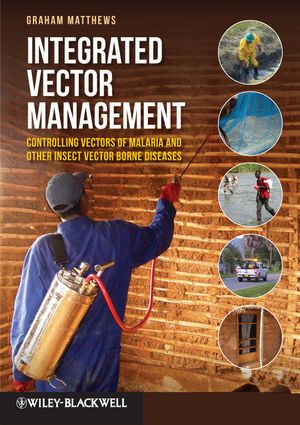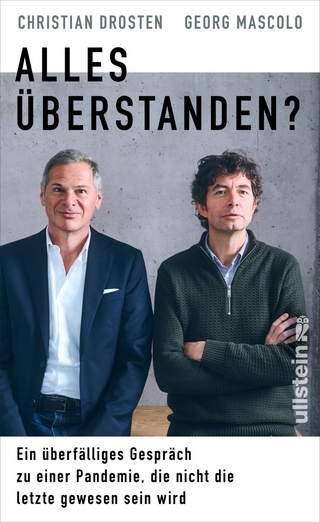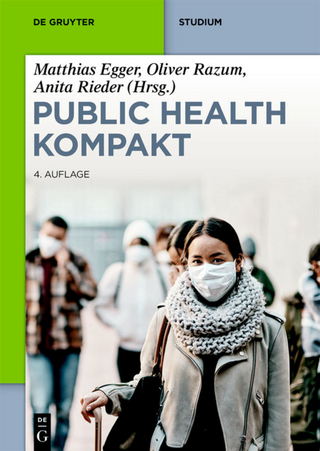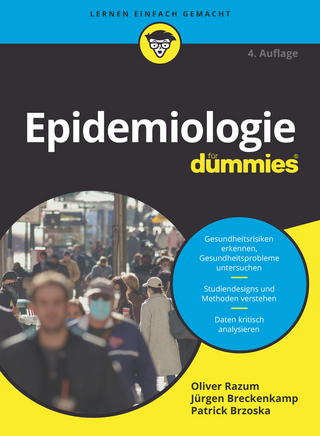
Integrated Vector Management
Wiley-Blackwell (Verlag)
978-0-470-65966-3 (ISBN)
- Titel z.Zt. nicht lieferbar
- Versandkostenfrei innerhalb Deutschlands
- Auch auf Rechnung
- Verfügbarkeit in der Filiale vor Ort prüfen
- Artikel merken
In Integrated Vector Management, Graham Matthews covers the main chemical methods of vector control, including the use of indoor residual spraying, space treatments, the use of treated bed nets and larviciding, but also stresses the importance of drainage schemes and improvement of houses to prevent access of indoor vectors, techniques that have largely been responsible for reducing the risk of vector borne diseases in Europe and the USA. This book combines practical information from successful vector control programmes, including early use of DDT, and recent research into a vital resource for all those now involved in combating insect vector borne diseases.
Integrated Vector Management is an essential tool, not only for medical entomologists and those directly involved in government health departments, but also for all those who provide the skills and management needed to operate successful area-wide vector management programmes. Libraries in all universities and research establishments world-wide, where biological sciences, medicine and agriculture are studied and taught should have multiple copies of this important book.
Graham Matthews is Emeritus Professor of Pest Management at Imperial College, London, UK and, since 1972, he has advised the World Health Organization on the equipment used for vector control. Over the last decade he has also been Technical Director of the NGO, Yaounde Initiative Foundation and has been directly involved in vector control in Cameroon.
Preface Acknowledgements
1 Introduction
Insect vectors
Distribution of vectors
Mosquitoes
Anopheles spp.
Aedes spp.
Culex spp.
Flies
Simulium spp.
Glossina spp. tsetse flies
Phlebotomine sand flies
Musca domestica and other synanthropic spp.
Other vectors
Triatomine bugs
Chemical control
Hazard and toxicity
Toxicity
Insecticides
WHO recommendations
Formulations
Packaging and storage
Waste disposal
Conclusion
References
2 Indoor Residual Spraying
Equipment for indoor residual spraying
Spray volume
Insecticides
Operator exposure
Resident exposure
Implementation of indoor residual spraying
Village intervention teams
Planning programmes
Insecticides
Equipment required
Storage
Training
Monitoring
Environmental assessment
Evaluation
Economics
Conclusion
References
3 Space Treatment
Requirements for space treatments
Equipment for space treatments
Portable equipment
Mist treatments
Vehicle mounted equipment
Aerial application
Insecticides
Planning
Assessment of space sprays
Monitoring
Conclusion
References
4 Bed Nets and Treated Clothing
Material
Mesh size
Shape
Insecticide
Insecticide impregnation
Impact of washing nets
Distribution of nets
Trial data
Operational use
Treated clothing
Impregnated sheeting
Conclusion
References
5 Larviciding
Larvicide application
Mosquito control
Oils
Insecticides
Application of mosquito larvicides
Knapsack spraying
Motorised equipment
Aerial application for mosquito control
Application of aerial sprays
Application of granules
Ground application
Aerial application
Monitoring
Black flies
Insecticides
Aerial application of larvicides for black fly control
Boat application
Applications in small streams
Monitoring
Conclusion
References
6 Integrated Vector Management
Cultural controls
House design
Drainage and water management schemes
Personal protection
Impregnated clothing
Insecticide treated bed nets
Repellents
Barrier treatments
Implementation of IVM
An example of IVM at Copper mines in Zambia
Costs
Development of new technology
Conclusion
References
7 Other Insects – Flies, Cockroaches and Bed Bugs
Flies
Refuse dumps
Space treatments
Mist treatments
Cockroaches
Traps
Sprays
Baits
Bed bugs
Conclusion
References
8 Looking Ahead
New insecticides?
Can insecticides with new modes of action be developed?
Insecticide resistance
Bio-pesticides
Spray technology
Electrostatic spraying?
Different sprayers?
Different nozzles?
Using a paint
Innovative application technique
Genetically modified mosquitoes
Attractants
Urbanisation
Economics
Conclusion
References
Appendix A: Calibration
Appendix B: Conversion Tables
Index
| Verlagsort | Hoboken |
|---|---|
| Sprache | englisch |
| Maße | 181 x 254 mm |
| Gewicht | 708 g |
| Themenwelt | Studium ► Querschnittsbereiche ► Epidemiologie / Med. Biometrie |
| Naturwissenschaften ► Biologie ► Zoologie | |
| ISBN-10 | 0-470-65966-1 / 0470659661 |
| ISBN-13 | 978-0-470-65966-3 / 9780470659663 |
| Zustand | Neuware |
| Informationen gemäß Produktsicherheitsverordnung (GPSR) | |
| Haben Sie eine Frage zum Produkt? |
aus dem Bereich


